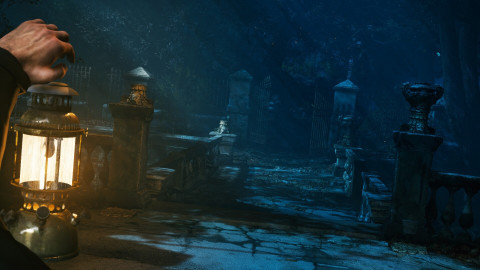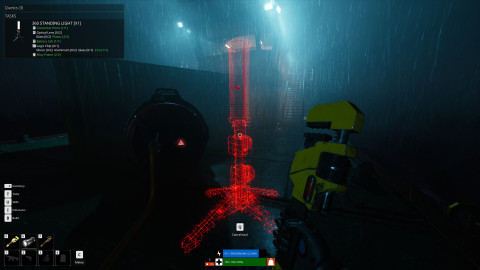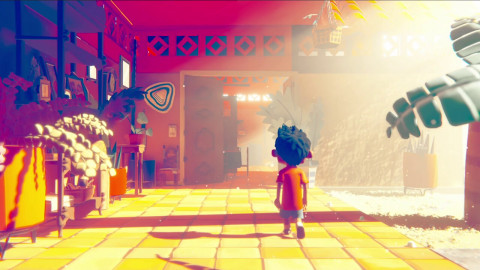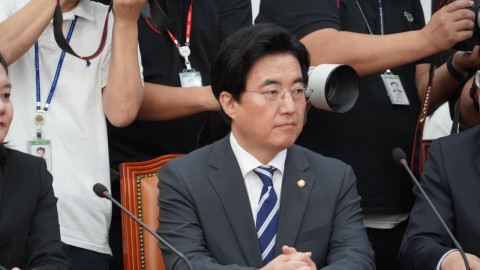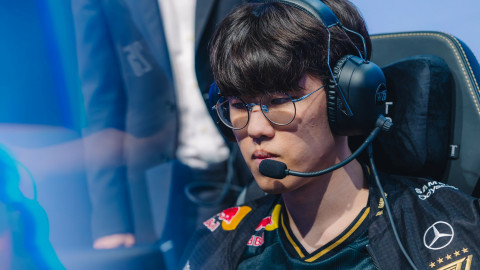
It has been almost three weeks since Legends of Runeterra, the collectible card game made by Riot Games, entered its Open Beta stage. Headlined by popular icons from the IP League of Legends built over the years, Legends of Runeterra continues to explore the universe (of the world called Runeterra), bringing new storylines and characters. In terms of gameplay, it's best described as a good blend between Hearthstone's fun and lighthearted aesthetics, and Magic: The Gathering Arena's combat and deck-building mechanics.
We had a chance to speak to Dillon Buckner, the Communications Lead for Legends of Runeterra at Riot Games, and ask him about the development of Legends of Runeterra. He told us about the early design process of Legends of Runeterra, how the development team landed on its unique and generous economic system, and he expanded on the team's design philosophy when it comes to card balance.
How long has Legends of Runeterra been in development?
The idea of a League-inspired card game has been around at Riot almost as long as League has. One of the things I love about working at Riot is you can find a ton of enthusiasts for pretty much anything, and we’ve always had a sizable CCG crowd—I can even count how many card games I’ve been introduced to here. In terms of actual development, we’ve had several prototypes over the years, but Legends of Runeterra itself was largely built over the last three years.
Any new game in a given genre stands on the shoulders of those that came before it. What are the lessons the Legends of Runeterra team learned from other famous card games, and which games did the team study?
Our team has collectively played so, SO many card games, and we’ve really tried to pull from our experience with the genre as a whole when designing LoR. I can definitely remember conversations around MTG (paper, Online, Arena), Hearthstone, Shadowverse, Gwent, Yu-gi-oh, Artifact, Netrunner, Eternal...the list goes on.
We learned all sorts of little things from our experience, but I’d say the big overall lesson we learned was really how much we’d need to design LoR from the ground up if we wanted to achieve our goals for player-friendly progression and blending depth with accessibility.
What were some of the challenges in the development process of the game?
You could definitely get a lot of different answers to that! Designing card acquisition was a huge long-term challenge, and even our core gameplay involved a lot of iteration over time. One really key challenge was finding the right mix in representing the League IP in LoR’s gameplay, particularly with Champions. We went through all sorts of back and forth on the exact role Champions should play (gameplay-wise, thematically, everything), and we actually realized we needed to make some significant improvements in the last year or so before we announced.
Separate level two art was a relatively late addition, for example, and we generally dialed up both the visual and gameplay pay-offs for Champions over time. It’s been great to see that work pay off in player reception to Champions’ larger-than-life role in the game.
How did the team land on the six regions represented in the game now?
Well, it’s important to keep in mind that we plan to expand LoR to new regions starting this year, so we certainly never intended the current roster to be final. That said, there are a bunch of reasons really, ranging from the depth of prior exploration (many of the current six would have been strange omissions) to the regions including Champions or thematic elements that excited us from a gameplay design perspective.
Designing a game is all about going back and forth with ideas, and many ideas end up not making it. Can you name a few of the wildest ideas the team had that didn’t end up making it?
We definitely went through a lot of ideas for LoR’s economy. Once we’d articulated our goals for our progression systems, we got to prototyping, and probably the wildest things we tried were a variety of “collection-less” systems where players didn’t actually “own” cards in the traditional sense, they just unlocked various region combinations, deck building options, etc.
Ultimately though, we found testers didn’t really enjoy this approach—many of them missed the satisfaction of building their collection, or the thrill of pulling an exciting card—and were frequently confused. That testing was still helpful to us though and helped inform a lot of what you see today, including our weekly Vault, which is basically our way of offering the thrill of pack pulls without making players pay for it.
What aspect (or aspects) about Legends of Runeterra is the development team most proud of?
Again, I’m sure answers would differ, but I’d have to say the success with which the League IP comes through in a way to which both League and non-League players have responded so warmly. Since LoR is League-inspired / themed rather than an attempt to more literally translate gameplay, I know we were all very anxious to see what League players would think and thrilled when they reacted positively.
On the other side, it’s been so encouraging to see non-League players get their first look at the IP through LoR and to hear about all the new elements and characters they’re falling in love with.
Other than it taking place in the Runeterra universe, what makes LoR your game, as developers?
I think it comes down to how much the various elements of LoR are so purpose-built to support the goals we decided on as a team full of lifelong card game fans. We didn’t just adopt an existing business model or turn structure—we built ones that would support our goals and help bring players the experience we want for them. Examples like that are all over the game, and it’s incredibly satisfying to have put that realized vision out there for players to enjoy and help us build further.
You’ve mentioned the economy of the game a few times now. The card acquisition model of Legends of Runeterra is bold and unique. How long was it in development, and how did the team land on the current model?
Creating a new kind of economy to support our goals for LoR has been a priority for most of LoR’s development, though the details have varied immensely over time. One thing we did decide early on is that paid random packs were the root of many issues we had with existing card games. Of course, paid random packs are also a foundation of the genre, so designing a replacement system was pretty challenging, and we went through a lot of iterations like the one I mentioned earlier.
Ultimately, we decided that our overall goal with progression was to give players more choice and control in how they obtained cards, and the economy and acquisition model to support that really came together in the last year or so before we announced LoR. With features like region road, the vault, and direct card crafting & purchase, we’re trying to offer players a bunch of ways to get the cards they actually want and experiment with a variety of decks.
Was it ever considered to make Legends of Runeterra a trading card game?
Not particularly. Designing an economy that met our goals for the player experience was a huge focus for us, and a player trading system would’ve been a huge variable while still actively designing our core experience, so it’s never really been in our plans.
I wouldn’t say it’s completely off the table, but there would be a ton of challenges involved, as there’s obviously a lot of potential for abuse and unforeseen effects. It’s definitely possible that player trading is just a poor match for our progression goals and we decide to not pursue it.
Why has the team chosen that players can’t exchange cards for Shards, so they can craft other cards?
We want players to be able to build their collections in LoR, not feel like they have to destroy parts of it in order to fund whatever new cards or deck they have their eye on. Instead, we’ve opted to build LoR’s economy to support higher overall card access and provide a bunch of different options for acquiring the cards you want, including the region road system that lets you focus your acquisition within a particular region.
It’s Beta, so many cards could still change. Has the team thought of a balance approach for when the game launches? And has the team thought of a “card refund” policy yet for cards that get changed?
We patch LoR every other Tuesday, with card updates every other patch (so monthly). When it comes to how much we change in those patches, we’re still learning and want to hear what players think, but we plan to pretty actively adjust cards in pursuit of our gameplay goals and to keep LoR fresh.
I actually handle patch notes for our team, so I’m constantly in touch with the gameplay designers and can share some info on their goals. When we look at balance in LoR and consider changes, we have some high-level, aspirational targets we use to guide our long-term efforts:
- Every champion should have a deck where they're the best fit and their “dream” can be realized.
- Non-champion cards should have at least one deck where they're a good option.
- Regions should have at least one competitively viable deck.
- The meta should support the widest possible array of competitively viable decks.
While buffing cards in pursuit of these targets is the fun part, we will also power down cards where necessary. When we do, we want to avoid over-nerfs (cards should remain playable) as well as minimize collateral damage to cards or decks that aren’t the actual target of a given change.
We fully plan to monitor changes, rather than drop them and forget, and will make further tweaks in future patches as needed. This last bit is particularly critical because we don’t plan to refund cards we’re adjusting—our commitment is that any card a player obtains should remain viable despite changes (or be quickly adjusted again if we miss the mark), and that LoR’s generous card access means players always have options to iterate on their current strategies or pursue new ones.
Is the team planning on crossover events between League of Legends and Legends of Runeterra?
Not at the moment. We’ve been pretty laser-focused on getting the game in front of players and ready for launch, and really establishing what LoR is beyond “the League card game.” That said, I’m personally very excited about our teams’ overall collaboration in continuing to develop the League IP—the LoL team pushing forward on some elements, ours on others—and I’m hopeful that will bear crossover potential down the line.
What features that currently aren’t in the game is the team working hard towards?
There’s hard work going on across the board, particularly in getting the game ready for mobile later this year, but I think I’ve got an answer that covers both—new regions!
Much of the team is working hard on future card releases that will bring new regions and champions to LoR this year and beyond. The League fan in me is excited to see LoR take in more of Runeterra and its Champions, while the lifelong CCG player in me is fascinated that we’re going to add multiple new “hero” or “color” equivalents over the next few years. I can’t imagine what LoR (or the deckbuilding possibilities) will look like two years from now, but I can tell you I’m excited as hell to work towards it.
Any last words to the people that have been playing the game so far, as the Open Beta progresses?
Just keep telling us what you think and what can be better! We’ve already learned so much, and are so excited to keep polishing LoR as we head towards launch, mobile, and new regions later this year.
Want to get ahead of the competition in Legends of Runeterra? Check out our Legends of Runeterra guide page, featuring over 30 guides for the game!
Images via Riot Games.
-

Storyteller by heart. If something is competitive, I am interested in it.
Sort by:
Comments :1
-
0
level 1 Helen_Lee
The project became even better. It is good that you made the game more friendly to the players in terms of progression and get a good mixture of depth and availability. The main skill, in my opinion, is the ability to quickly understand many different systems. Each system is made up of components, and you need to quickly understand each component and how they interact with each other. I always tell the story of the company https://alpacked.io/, which in 2 months transferred the entire AI application infrastructure to new type servers.

